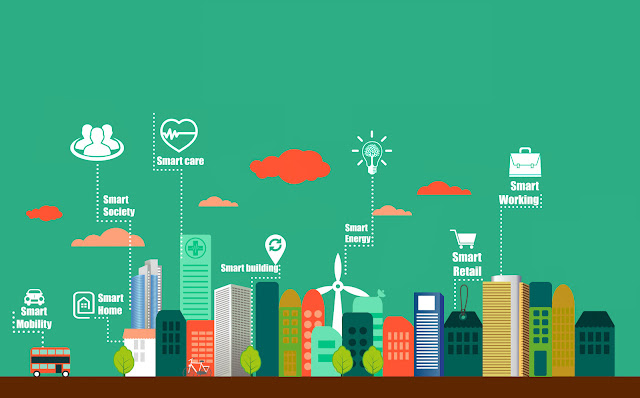
The smart city revolution shows no signs of slowing down, and the opportunities for the lighting industry are ripe for the taking. In the run up to Lux’s Lighting Fixture Design Conference, which will run from the 21 to the 22nd of February in Central London, they reveal their top five smart cites, where lighting is allowing city authorities to reimagine how our population centres are managed.
5) Los Angeles
Los Angeles is currently seeing through a plan to replace every old sodium-vapour streetlight with smart LED fixtures. The city is now 80 percent of the way through the project, which has seen the conversion of nearly 200,000 street lights. The project has saved the city over nine million dollars and has acted to reduce crime.
The existing streetlight poles are being replaced with ‘smartpoles’, which are fitted with 4G LTE wireless technology and act to improve phone reception in the tightly packed city. The smart street lights are also capable of alerting city authorities when a fixture breaks down and is need of repair and some are also able to monitor and compile analytics on traffic levels and the availability of parking places.
As we reported last year some Los Angeles street lights are able to use sensors to listen out for car crashes, reporting them to the emergency services when they occur.
Singapore is aiming to become the world’s first ‘smart nation’. Sensors and cameras are being installed to track absolutely everything from traffic to the capacity of wastepaper bins.
In Singapore lighting plays a role in the city’s incredibly smart transport network, which utilises road sensors, smart traffic lights and smart parking.
Late last year Philips Lighting announced a partnership with the Sentosa Development Corporation to develop a connected streetlight management system on Singapore’s island resort of Sentosa.
It was also recently announced that visible light communication (VLC) is being installed in the massive CapitaLand Mall to create an indoor positioning system that allows shoppers to find their favourite stores amid the mall’s labyrinth of aisles and corridors.
The authorities in Singapore have also joined forces with Scottish Li-Fi firm pureLifi, in an attempt to bring the revolutionary technology to the South-Asian city-state.
Copenhagen is already one of the world’s most sustainable and smart cities and it aims to become carbon neutral by the year 2025. Nearly half of the city’s street lights were replaced recently with LED. A number of these new fixtures form the backbone of a growing smart lighting network.
The LED streetlights brighten when vehicles approach and then dim after they pass, ensuring that roads are not continuously illuminated when it is not necessary. This is a safer option than turning off streetlights altogether in order to save money, which has been the case in the UK.
The sensor-laden light fixtures are also able to capture data and analytics and are able to help coordinate the city’s services. For example, fixtures can alert city authorities that waste bins need to be emptied.
San Francisco was arguably one of the first smart cities in the world and given its location, near Silicon Valley, this should hardly be surprising.
The city has more LEED-certified buildings than any other in the United States and a connected city initiative enables residents to locate parking places.
It was recently announced that 18,500 of San Francisco’s light-pressure sodium street light fixtures would be replaced with smart LEDs.
The new LEDs will be run via wireless smart controllers that will allow the city to remotely monitor individual light performance and adjust the intensity of the lights as required. For example, if there was a road traffic incident, the lights could be turned up.
The lights will also warn city authorities when fixtures fail or burn out, making lives better for residents, whilst saving the city money.
San Francisco’s new street lights will be powered with 100 percent clean energy, which, along with the wireless controls, will make them the greenest street lights in California.
Barcelona is renowned the world over for its smart city prowess. Boxes fitted to lampposts host finely tuned computer systems, which are able to measure traffic levels, road pollution, crowds and even the number of photographs on a particular street posted on Instagram.
Sensors fitted to streetlights and in the ground are also used to monitor the weather in Barcelona.
A few years ago the city suffered a very severe drought and came very close to running out of water altogether. As a result, smart sensors measure rainfall and analyse irrigation levels in the ground. This information is then used to modify the city’s sprinkler system to save water.
Barcelona has made the sensor it developed, Sentilo, available on the internet, meaning that city planers from around the world can study Barcelona’s smart city ventures and use the results as inspiration for their own projects.
led lighting · led streetlights · Novel Energy Lighting · smart cities · smart led streetlight · visible light communication · wireless street lights

